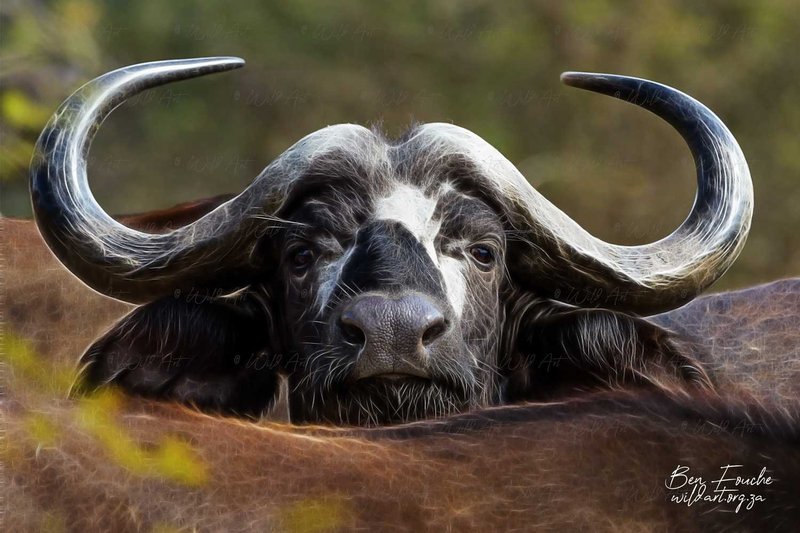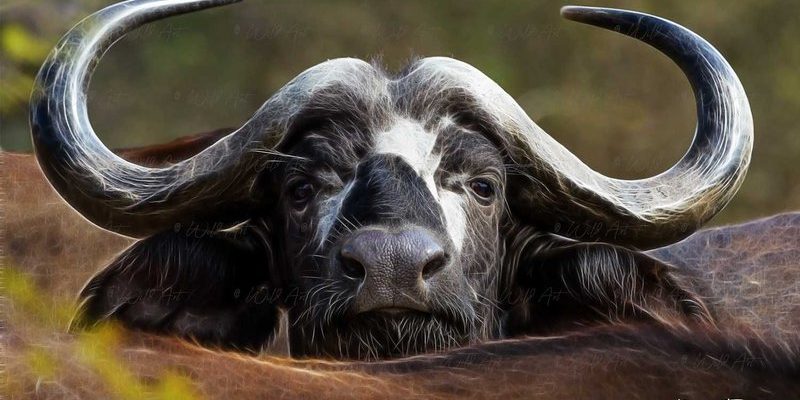
Imagine the African Buffalo as the backbone of the ecosystems it inhabits. It stands sturdy against the harsh African sun, grazing calmly while surrounding wildlife flourishes. In stories and traditions, the buffalo often embodies important life lessons or cultural values, similar to how we use animals in myths in other parts of the world. Let’s explore how this iconic animal is represented in cultures and folklore, revealing the rich tapestry of beliefs that surround it.
Symbolism of the African Buffalo in African Culture
The African Buffalo holds a special place in various African cultures, symbolizing strength and community. In many tribes, buffalos are seen as protectors. Their massive horns and formidable presence represent the idea of defense, akin to a guardian that stands watch over the herd or family. In this way, the buffalo becomes a metaphor for unity and collective strength.
*Many communities also use buffalo as a symbol of prosperity.* In farming cultures, buffaloes help in plowing fields or transporting goods, making them invaluable assets. This role emphasizes the connection between the buffalo and the productivity of the land. It’s like saying that the buffalo is not just an animal; it’s a lifeline for many families.
Interestingly, in some cultures, the buffalo’s spirit is believed to guide individuals through challenges. When someone faces hardship, stories of the buffalo’s resilience often inspire communities to band together. This notion fosters a deep respect for the buffalo, intertwining it with local identity and heritage.
Folklore and Stories Involving the African Buffalo
Folklore is rich with tales of the African Buffalo, often illustrating moral lessons or cultural values. One popular story involves a clever buffalo that outsmarts predators through teamwork and strategy. In this tale, the buffalo demonstrates the importance of community cooperation, showing that strength lies in unity.
*Another captivating myth tells of a buffalo that turned into a human.* According to the legend, this transformation occurred because the buffalo wanted to better understand the struggles of humans. Through its trials and tribulations, it discovers the importance of humility and empathy. This story serves as a reminder that understanding others’ challenges can lead to compassion—an essential quality in any society.
Moreover, buffalo horns are often featured in traditional storytelling rituals. They are used as instruments, creating rhythmic sounds that accompany oral tales passed down through generations. This practice not only keeps the folklore alive but also embeds the buffalo deeper into the cultural fabric of African communities.
The African Buffalo in Art and Symbolism
Art is another realm where the African Buffalo shines brightly. From intricate carvings to vibrant paintings, artists frequently portray the buffalo as a source of inspiration. These artworks often capture the buffalo’s majestic presence, celebrating its role in nature and culture.
*In some regions, buffalo imagery is used in tribal masks and totems.* These artifacts serve as spiritual symbols during rituals or ceremonies, believed to channel the strength and spirit of the buffalo. Such representations highlight the animal’s importance not just as a living being but also as a cultural emblem.
The buffalo’s majestic silhouette often appears in textiles and jewelry, showcasing its significance in daily life. Everyday items adorned with buffalo motifs remind people of their cultural roots, connecting them to their ancestors and traditional beliefs.
Myths and Legends Surrounding the African Buffalo
There are many myths surrounding the African Buffalo, each offering insight into how different cultures view this magnificent animal. One such legend tells of the Buffalo Woman, a mythical figure said to have the power to heal and protect. In this story, she transforms into a buffalo to evade capture, symbolizing strength and freedom. This narrative not only reflects the buffalo’s might but also emphasizes the value of independence and resilience.
In another tale, the African Buffalo interacts with other animals, often as a leader or peacemaker. For instance, when there’s a conflict among animals, it’s the buffalo that steps in to mediate. This representation highlights the idea of wisdom and the importance of community leadership.
These myths are more than just stories; they convey deep-rooted values about unity, strength, and the interconnectedness of life. They serve as a reminder that every creature, no matter how large or small, plays a crucial role in the circle of life.
The African Buffalo in Modern Culture
In contemporary culture, the African Buffalo remains a powerful symbol, making appearances in literature, films, and even fashion. Its portrayal often emphasizes themes of survival and the struggle against adversity. For example, documentaries showcasing the buffalo often highlight its incredible migratory patterns and social formations, inspiring awe and respect from audiences worldwide.
*Moreover, conservation efforts featuring the African Buffalo emphasize its role in biodiversity.* As these efforts gain momentum, they help raise awareness about the importance of preserving this majestic creature and its habitat. The buffalo becomes a symbol of hope, representing the ongoing fight to protect our natural environments.
As people engage with these modern representations, they often form a connection to the buffalo that transcends cultural boundaries. It becomes a universal emblem of strength and resilience, resonating with anyone who understands the significance of standing tall against challenges.
The African Buffalo in Spiritual Beliefs
In many African traditions, the African Buffalo holds a spiritual significance beyond its physical presence. Some cultures believe that buffalo spirits can influence human lives. For example, during certain ceremonies, it’s common to call upon the buffalo spirit for guidance, protection, or blessings.
*Rituals involving the buffalo often incorporate offerings, such as food or crafted items,* as a way to honor the spirit and express gratitude. These practices reinforce the bond between the buffalo and the community, showcasing a profound respect for the animal.
Additionally, the buffalo is often linked to ancestral worship. In various tribes, it’s believed that the spirits of ancestors may take on the form of a buffalo, serving as protectors over their descendants. This belief not only enriches cultural identity but also deepens the connection between the land, animals, and people.
The representation of the African Buffalo in culture and folklore is a testament to its enduring legacy. From its role as a protector and symbol of strength to its place in myths and modern art, the buffalo captures the hearts and minds of many. It serves as a reminder of the interconnectedness of life and the values we hold dear in our communities.
As we delve into the stories and significance of the African Buffalo, we see how cultural narratives shape our understanding of the world. The buffalo, standing proud in the African landscape, continues to inspire awe, respect, and admiration in those who encounter it—whether in the wild or in stories passed down through generations. So next time you think of the African Buffalo, remember it’s not just a magnificent creature; it’s a symbol of strength, unity, and resilience in cultures around the world.

